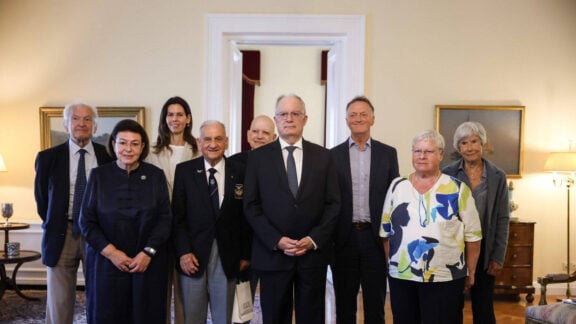The history of Cyprus is marked by division, contestation, and the perpetual struggle over competing sovereignties. Over the past century, a succession of proposals has sought to resolve the island’s entrenched conflict, none more ambitious than the Annan Plan of 2004, brokered under the auspices of the United Nations. Aiming to reunify the island within a bi-zonal, bi-communal federation, the plan laid out an elaborate constitutional framework to reconcile the aspirations and insecurities of Greek and Turkish Cypriots. Yet, while supported by the Turkish Cypriot community and endorsed internationally, it was decisively rejected by the majority of Greek Cypriots in a referendum. This rejection cannot just be understood simply as a rebuff to reconciliation. Rather it is a reflection of deep-rooted historical grievances, structural asymmetries, and anxieties about legitimacy, sovereignty, and security. As Costas M. Constantinou has argued, the postcolonial condition of Cyprus demands not merely legal resolution but recognition of the “coloniality of power” that continues to frame its geopolitics, producing asymmetrical relations masked as negotiations between equals.
The Annan Plan was a prodigious feat of legal architecture. It proposed a rotational presidency, extensive property restitution mechanisms, and demilitarisation measures. Yet it failed to reckon with the psychological economy of occupation and displacement. The plan’s perceived endorsement of the post-1974 status quo, particularly the legitimisation of settler populations and the retention of Turkish military presence, rendered it politically untenable for many Greek Cypriots. It was not merely a matter of political calculation, but of existential apprehension. As Neophytos Loizides contends, in divided societies, peace settlements must not only be fair in procedural terms but must also be perceived as substantively just by the parties involved: “The perceived fairness of institutional design must be matched by legitimacy in the eyes of the communities it seeks to unite.” The legitimacy deficit was deepened by the plan’s top-down imposition and by the absence of a broad-based reconciliation process, an omission that created the impression of imposition rather than inclusion, and of external pressure rather than local agency.
Against this modern blueprint stands a more ancient precedent: the Byzantine Arab condominium, an unlikely and often forgotten political arrangement that governed Cyprus from the seventh to the tenth century. This joint administration emerged not from treaties or referenda, but from military stalemate and imperial pragmatism. Following Arab raids in the 650s and the subsequent inability of either the Byzantine Empire or the Umayyad Caliphate to dominate the island outright, the two powers instituted a novel form of co-rule. Taxes were collected and shared between the empires; both abstained from stationing large military contingents on the island, and a delicate balance of supervision and non-intervention allowed Cypriot civil life to continue. As historian Dimitri Obolensky notes, Cyprus was neither Byzantine nor Arab, but both, and its very ambiguity was its protection. The arrangement, though foreign to modern sensibilities, permitted a kind of pluralistic governance in which ambiguity served as a stabilising force rather than a flaw.
While structurally alien to modern norms of democratic governance and self-determination, the condominium offers an instructive counterpoint to the failures of federalist solutions like the Annan Plan. It did notoperate through clarity of jurisdiction but rather, through ambiguity; not through exclusive sovereignty, but through overlapping, negotiated interests. Drawing on Foucault’s theory of governmentality, one might interpret the condominium as an early iteration of diffuse power, in which rule is exercised not by a singular sovereign, but instead, through a dynamic equilibrium of competing authorities. This interpretation destabilises the Hobbesian assumption that political order depends upon centralised authority, suggesting instead that stability can arise from negotiated coexistence. In a contemporary frame, this challenges the assumption that peace must follow from fixed, delineated sovereignties. Indeed, it suggests that hybridity, if institutionalised with safeguards and parity, may serve as a more adaptive model of governance in deeply divided societies. The condominium functioned precisely because it did not rely on homogenisation or national integration. Its ethos was pragmatic coexistence, not political resolution.
The very implausibility of resurrecting such a model for Cyprus today is what renders it compelling. The condominium embraced a form of cohabitation that deliberately suspended territorial finality. It functioned for centuries in the absence of clear borders, national identities, or even mutual trust, granted, in an era pre-nationalism and the rise of the nation-state. Its success rested not on shared narratives of belonging, but on the acknowledgement that shared administration could be more sustainable than perpetual contest. This logic resonates with the insights of Chantal Mouffe, who argues for “agonistic pluralism” as a mode of political co-existence where conflict, rather than being eliminated, is rendered non-violent through institutionalised negotiation. It also reflects the thought of James Tully, who advocates for constitutional dialogues that make room for overlapping identities and evolving forms of sovereignty. In Tully’s view, constitutionalism must be dialogic and responsive, not rooted in preordained categories but instead, in the lived realities of the peoples it seeks to govern.
The modern international system, with its rigid conception of unitary state sovereignty, offers little room for such arrangements. Yet examples exist, albeit rare and fraught. The Anglo-French condominium in the New Hebrides (present-day Vanuatu) endured from 1906 until independence in 1980, despite absurd levels of bureaucratic duplication. In Sudan, the Anglo-Egyptian condominium governed from 1899 until decolonisation in 1956, though it was marked by stark inequalities and British dominance. Both cases illustrate that joint sovereignty is feasible but must be grounded in clearly defined responsibilities, mutual consent, and, critically, attention to the voice and dignity of the local population. Scholars such as Susan Pedersen and Martin Thomas have shown that while these arrangements were often rife with contradictions, they could function with stability when major powers maintained balanced interests and local actors were not excluded entirely from participation.
Applying this to Cyprus would require a radical shift in political imagination. It would entail that Greece and Turkey relinquish the posture of patrons of ethnonational claims and instead assume the role of custodians of a pluralistic future for the island. Their role should be to enable a framework wherein Cypriots themselves forge a shared polity, one that preserves communal identities while resisting ethno-territorial fragmentation. Such a vision does not require the wholesale resurrection of the Byzantine-Arab model, though it may draw upon its guiding principle: that overlapping sovereignties can, under certain conditions, stabilise where binary rule has failed. This would involve a move away from a discourse of zero-sum ownership and toward one of mutual stewardship. It would also demand courage from all parties to let go of the comfort of fixed identities in favour of a more fluid political belonging.
There are, of course, profound risks in proposing this. Any contemporary condominium would be scrutinised for signs of neo-imperialism, a return to protectorate governance, or the erosion of the Republic of Cyprus’s hard-won international legitimacy. Moreover, it would have to overcome entrenched narratives of betrayal, displacement, and mistrust. Yet as the Cyprus problem grows increasingly intractable, and as reunification recedes from the horizon, the imaginative space for alternative models must expand. As Kalypso Nicolaïdis notes, pluralist forms of sovereignty must contend with emotional attachments to nationhood, but they also offer a pathway for disaggregating authority without erasing identity. Cyprus, therefore, need not choose between the nation-state and the void, but can chart a course through the grey zones of shared sovereignty.
Rather than replicating the failures of the past or settling into the impasse of the present, Cyprus might reclaim its position as a site of political innovation. The Annan Plan offered a comprehensive and technical model of resolution, but underestimated the depth of historical memory and the affective dimensions of sovereignty. The Byzantine Arab condominium, for all its anachronism, invites us to reconsider the very architecture of rule, to loosen the hold of binary logic, and to envisage political arrangements not predicated on exclusive ownership. Perhaps the time has come to reimagine sovereignty not as indivisible, but as participatory and relational.
Cyprus has always existed at the confluence of empires, a terrain of competing visions and overlapping claims. It need not remain suspended in the melancholy of division. As Edward Said reminds us, “exile is strangely compelling to think about, but terrible to experience.” Cyprus has endured a long exile from unity, hemmed in by the certainties of international law and the inflexibility of nationalist myth. Perhaps, by reviving the memory of shared rule and by reimagining the ethics of cohabitation, the island may yet find a path forward, neither as partitioned nor as absorbed, but as plural, complex, and sovereign in a new key.









